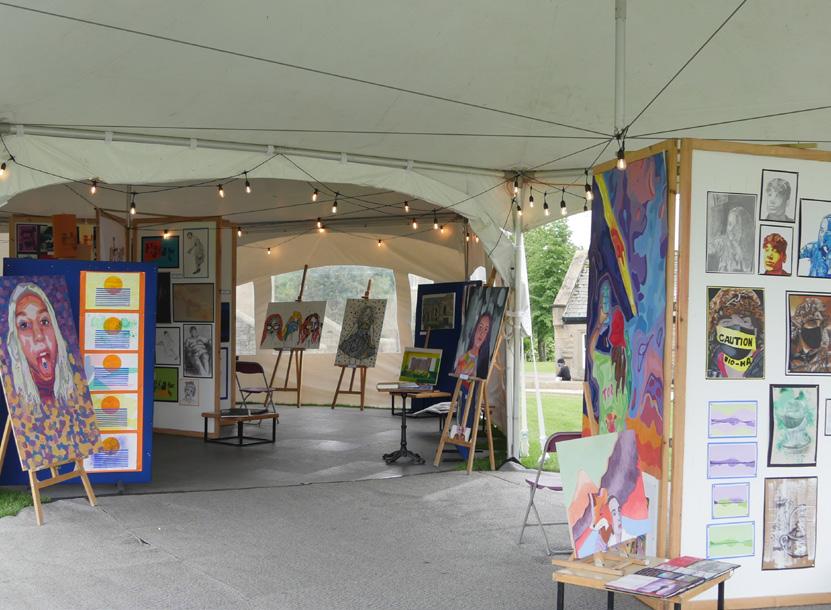
1 minute read
ART
Head of Department: Mrs Kate Baptist
Email: kb@barneyschool.org.uk
Advertisement
Course name: GCSE Art, Craft & Design
Exam board: AQA
WHY ART?
Art education leads to students who are:
• Flexible
• Effective communicators
• Problem-solving and resourceful
• Accept feedback
• Are creative thinkers and innovators
Art provides an adaptable set of skills for a wide range of modern occupations; the internet has created an explosion of opportunity for digital designers and multimedia artists.
It enhances fine motor skills, handeye coordination, problem solving skills, lateral thinking, complex analysis, self-discipline and critical thinking skills. No matter what career you choose, those who can arrange, present and display material in a way that is aesthetically pleasing have an advantage.
But those with a wide skill set have an advantage in any career. Some people excel at mathematics, others have strengths in written language, others excel in creative areas such as Art and Design. To excel in two or three of these areas, means being part of a much smaller subset of the population. Those who are multi-skilled are astronomically more useful, well-rounded, hireable and capable of excelling in a much wider range of professions.
SYLLABUS CONTENT:
Students will learn to:
• Develop ideas through investigations, demonstrating critical understanding of sources
• Refine work by exploring ideas, selecting and experimenting with appropriate media, materials, techniques and processes
• Record ideas, observations and insights relevant to intentions as work progresses
• Present a personal and meaningful response that realises intentions and demonstrates understanding of visual language.
Each student will develop a portfolio of coursework work in response to a theme, which evidences the journey from initial engagement to the realisation of intentions. This gives students the opportunity to demonstrate, through an extended creative response, their ability to draw together different areas of knowledge, skills and/or understanding of a variety of sources.
Students will be given the opportunity to work in a range of range of two-dimensional and three-dimensional processes and media, and explore relevant critical and contextual sources such as the work of contemporary artists, craftspeople and designers and the different purposes, intentions and functions of art, craft and design.
ASSESSMENT:
Component 1: Portfolio
A coursework portfolio that in total shows explicit coverage of the four assessment objectives above. It must include a sustained project evidencing the journey from initial engagement to the realisation of intentions and a selection of further work undertaken during the student’s course of study.
No time limit
60% of GCSE
Component 2: Externally set assignment
Students respond to their chosen starting point from an externally set assignment paper relating to their subject title, evidencing coverage of all four assessment objectives.
Preparatory period followed by 10 hours of supervised time
40% of GCSE







